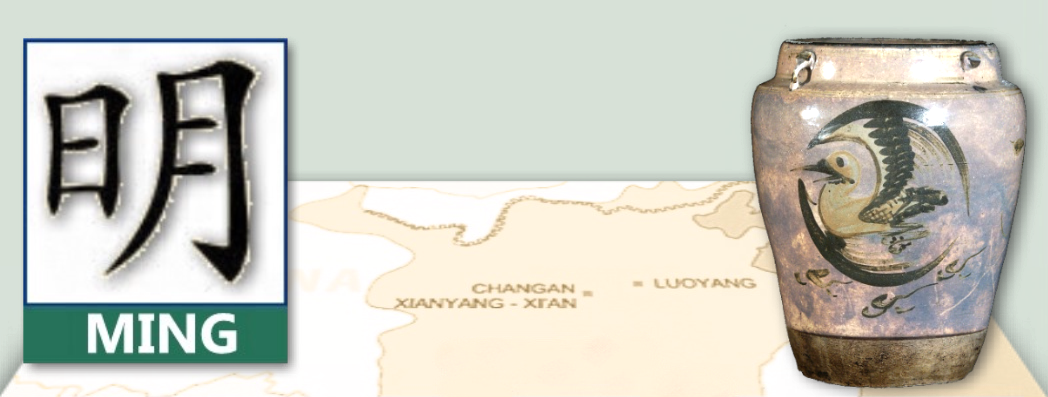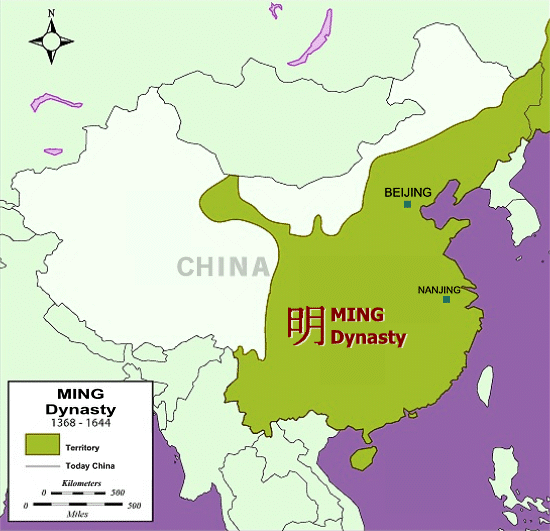1368 - 1644: Ming Dynasty

Image above - Jar Cizhou ware with overglaze decoration
Ming Dynasty (1368-1644)
The last great Chinese dynasty was the Ming Dynasty (1368-1644) after the collapse of the Yuan Dynasty of Mongol origin. It is "the Great Ming Empire" which reigned for three centuries, with a first half of bustling commercial expansion, and a second plagued by discord and internal crises.
Zhu Yuanzhang, the founder and first emperor of the Ming Dynasty, brought the Han back to power in China, and reigned for 30 years (1368-1398). Orphaned at a young age, he was educated in a Buddhist monastery, where he learned philosophy, religion and government. Here he found the important contacts for a rebellion against the Yuan Dynasty. He moved the capital of the empire to Nanjing, and supported the creation of self-sufficient farming communities.
The Ming emperors encouraged a renewed sense of cultural identity and craftsmanship, as evidenced by the bronze and funerary objects that often imitate the Shang, Zhou and Tang dynasties.
(Yan) Beijing becomes the capital at the beginning of the 14th century, when the Ming dynasty reached its peak during the reign of the third Ming emperor, Chengzu (Yongle). The emperor built the palaces of the famous Forbidden City, and restored the Imperial Canal. A subsequent project was the final construction of the Great Wall began during the Qin and Han dynasties. Extraordinary and famous were the seven naval expeditions of Zheng He, who crossed south-east Asia and the Indian Ocean.
In the first period of the Ming Dynasty, the Chinese merchants regained a fundamental role in the cultural and economic renaissance of the country, reaching distant lands (and Japan), and exporting the famous Ming ceramics, porcelain with an incredible variety of colors. Among them are the emerald green blanket of the Yongle era, the ruby red of the Xuande era, the doucai of Chenghua, and the "white and blue".
Religion and philosophy gained an important place in the life of the Ming Dynasty. Taoism flourished during the reign of the devout Taoist Emperor Jiajing (1521-1567), who built three famous temples in Beijing: the Temple of the Sun, the Temple of the Earth, and the Temple of the Moon.
A series of natural disasters and an economic crisis brought to the decline of the Ming Dynasty.
Droughts and famines of the 17th century, epidemics and floods, wars with the Mongols, the raids of Japanese pirates in coastal cities, the earthquake of 1556 in Shanxi, put to the test the Ming central government. The economic crisis began with the lack of silver, tax increase, and the devaluation of money. The Ming Dynasty lost the "Mandate of Heaven", and succumbs to the rebel leader Li Zicheng of the Manchus people in 1644.



